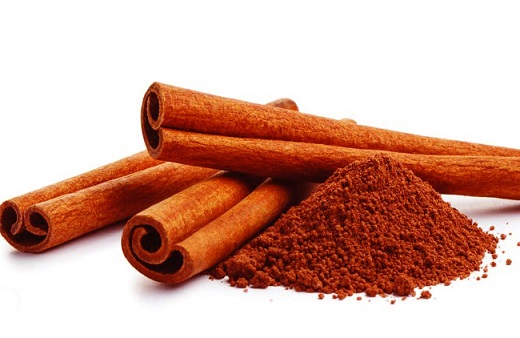Nikhil Prasad Fact checked by:Thailand Medical News Team Dec 02, 2024 4 months, 1 week, 4 days, 40 minutes ago
Medical News: Breakthrough in Osteoarthritis Treatment
Researchers from Chonnam National University Medical School in the Republic of Korea have made an exciting discovery about the potential health benefits of cinnamaldehyde, a natural compound found in cinnamon. Their study explores how this bioactive ingredient could provide relief from osteoarthritis (OA), a condition affecting millions worldwide. OA, known for its debilitating effects, involves the slow degradation of cartilage and inflammation of the joints, causing pain, stiffness, and reduced mobility. While current treatments often focus only on symptom management, this
Medical News report discusses a potential breakthrough that could target the underlying causes of the disease.
 Cinnamon Extract Offers Hope for Joint Pain Relief
Understanding the Power of Cinnamon
Cinnamon Extract Offers Hope for Joint Pain Relief
Understanding the Power of Cinnamon
Cinnamaldehyde is the main compound in cinnamon responsible for its characteristic aroma and flavor. Researchers have long recognized its anti-inflammatory, antioxidant, and antibacterial properties. In this study, scientists specifically evaluated cinnamaldehyde's effects on two key players in joint health: chondrocytes, the cells responsible for cartilage formation, and synoviocytes, cells that line the joints. Both cell types are often damaged in OA, leading to inflammation and joint degradation.
Using human cell models treated with the inflammatory protein IL-1β, the researchers analyzed cinnamaldehyde's ability to suppress harmful cellular activity and inflammation. They observed that cinnamaldehyde effectively inhibited the expression of proinflammatory molecules, including IL-6, COX-2, and matrix metalloproteinases (MMP-3 and MMP-13). These molecules are commonly overproduced in OA and play a role in cartilage breakdown and joint pain.
How Cinnamaldehyde Works
One of the study's key findings is cinnamaldehyde's impact on signaling pathways, particularly MAPK (mitogen-activated protein kinase) and NF-κB (nuclear factor-kappa B). These pathways regulate inflammation and cartilage degradation. When overactivated, they contribute to the progression of OA. The researchers discovered that cinnamaldehyde reduced the activity of these pathways, especially at higher doses, and significantly decreased inflammation and tissue damage.
In addition, cinnamaldehyde showed a protective effect on cell viability. While inflammatory conditions typically reduce the health and function of chondrocytes and synoviocytes, the compound helped maintain cell stability and minimized cytotoxicity even under stress.
Promising Results
The researchers also explored the dose-dependent effects of cinnamaldehyde, ranging from low to high concentrations. At higher doses, it demonstrated the greatest reductions in inflammatory markers and enzyme activity associated with joint damage. This indicates that cinnamaldehyde could be an effective therapy for reducing inflammation and slowing the progression of OA when used in appropriate amounts.
Interestingly, th
e compound's effectiveness was amplified when used alongside known inhibitors of the MAPK and NF-κB pathways. This synergistic effect suggests that cinnamaldehyde could potentially enhance the efficacy of existing treatments, offering new hope for OA patients.
Implications for Future Treatment
The study's findings are an important step toward developing novel, natural therapies for OA. Unlike many synthetic drugs that often cause side effects, cinnamaldehyde offers a safer alternative with broad therapeutic potential. Its ability to target multiple inflammatory pathways makes it particularly appealing for managing complex diseases like OA.
However, the researchers emphasized the need for further studies to confirm these effects in animal models and human clinical trials. They also highlighted the importance of refining delivery methods to ensure optimal absorption and effectiveness of cinnamaldehyde when used as a treatment.
Concluding Thoughts
This research demonstrates the remarkable potential of cinnamaldehyde to transform OA treatment by directly addressing the inflammation and cellular damage at the heart of the disease. Its multifaceted approach, targeting both inflammation and tissue preservation, paves the way for new strategies in joint health management. With ongoing studies, cinnamaldehyde could soon become a key ingredient in combating osteoarthritis and improving the lives of millions.
The study findings were published in the peer-reviewed: International Journal of Molecular Sciences.
https://www.mdpi.com/1422-0067/25/23/12914
For the latest on Herbs And Phytochemicals, keep on logging to Thailand
Medical News.
Read Also:
https://www.thailandmedical.news/news/medical-news-italian-study-shows-that-cinnamaldehyde-from-cinnamon-is-an-effective-adjuvant-for-covid-19-prevention-and-treatment
https://www.thailandmedical.news/news/italian-study-finds-cinnamaldehyde-is-an-effective-adjuvant-therapeutic-compound-for-reducing-inflammation-in-covid-19
https://www.thailandmedical.news/news/breaking-news-plant-based-compound-dicoumarol-emerges-as-promising-post-exposure-prophylactic-for-omicron-variant-of-sars-cov-2
https://www.thailandmedical.news/news/cinnamon-the-natural-remedy-for-flu-infections-and-beyond
https://www.thailandmedical.news/news/covid-19-herbs-german-american-study-shows-that-cinnamaldehyde-from-cinnamon-is-a-good-supplement-with-dexamethasone-for-treating-covid-19
https://www.thailandmedical.news/news/study-shows-curcumin,-cinnamon-and-resveratrol-health-supplements-effective-in-prevention-and-management-of-diabetes
https://www.thailandmedical.news/articles/herbs-and-phytochemicals
